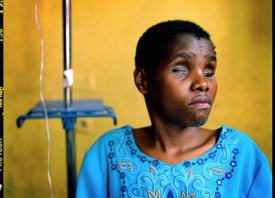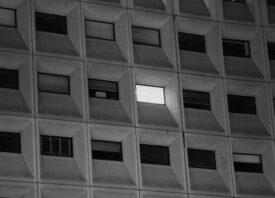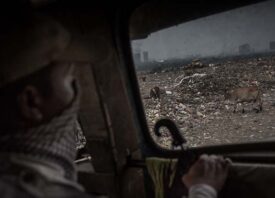Search this site
A Photographer Explores Male Vulnerability, Desire, and the Aging Body



“I used to show up to my friend Shaun’s place at 7:00 in the morning to catch the right light,” the photographer Matthew Morrocco remembers. “I’d be setting up while he was still asleep.” The artist embarked on what would become Complicit, a series of self-portraits and portraits of older men, when he was in his early twenties. At the time, he wanted the photographs to “feel like falling in love for the first time,” that warm sunlight reminiscent of balmy days in the summertime. It’s now ten years later, and the pictures never left him.
Morrocco embarked on the project, in part, as a way to satisfy his anxiety and curiosity about aging. But he also wanted to change the narrative about who gets seen, photographed, or immortalized in art, shifting the focus onto older gay men he met online. “I honestly have no idea how I chose the men in these photographs,” the artist admits.
“I feel like I’ve been answering this question for years, and I still really don’t know. Some people just feel honest in their appearance, and others feel fabricated. A good picture, to me, is about honesty, so I guess it was that. It was really about following whatever made the most sense in the moment.” What made sense in the moment included eating plums in the park with Olaf, dancing with Dennis, kissing Rolf, sitting on a tricycle at Shaun’s place, and lounging in bed with David.



“I was very deliberate in how I staged the photos, but I also wanted to blur the line between real-life candid scenes and staged photos,” Morrocco says. “I used a 4×5 view camera to shoot a lot of the scenes, which I used in tandem with a digital camera to loosen things up. I often rephotographed a scene two or three times, and went back to photograph the same people over about five years.”
For all the tenderness contained within the photographs themselves, Morrocco also understood the weight of history, with many of these men having survived the AIDs crisis and decades of homophobia and discrimination. He listened to their stories. “I think honestly there were just a lot of stories about suffering,” Morrocco tells me. “Being older and growing up in the ’80s and ’90s, it was hard to avoid.”
For Morrocco, who made himself just as vulnerable as his sitters over the course of the project, making the pictures–and sharing them with the world–brought its own challenges. “It was very emotionally taxing,” he says. “Both making the work and after it became public. I still have relationships with some of the guys which are good and healthy and nice relationships. But truthfully, I opened up something really raw and real to make this work and it took me many years to move on from it.”
The mirror became a recurring motif throughout the work, reflecting the artist’s face as well as his sitters’. “I had read somewhere that Caravaggio used mirrors to bounce light and create his dramatic images, and was thinking about Picasso’s cubism, and Velazquez’s Las Meninas,” Morrocco explains. “I wanted to do something similar with photographs and assert the work as something prescient to contemporary culture–like creating a distinct sense of not only my work but of culture today. I think the mirror selfie is so relevant to millennials, and now my work has that cultural marker of being from a distinct time period in the early 2000s, when we were all so worried about self-obsession.”


Complicit, like the work of Caravaggio and Velazquez, was created to last and endure. It first came to the blockchain in 2021, and in late April of 2022, it underwent an update. The current NFT collection has its own independent smart contract, which is more stable for collectors and gives the artist more control. “I think my work had always been NFTs; I just didn’t know it,” Morrocco says now. “One of the most important words in the NFT world is ‘community,’ and the portraits I made built a network of people that supported and cared about and were part of the work.
“What’s more, is that I think the permanence of the blockchain was an important factor. I grew up in photography at a time when it was really easy to share your work, but it was always ephemeral. I was making pictures that I wanted to stand the test of time, like 19th-century paintings, or Renaissance frescos. Without NFTs, the work was just another Instagram post, which, to me, didn’t make sense. Now, the work hangs in digital galleries and personal viewing spaces around the world. It brings a sense of dignity and respect to the people I photographed.”
The photographs took a long and winding road to get here. They’ve appeared in The New Yorker and have been collected by the RISD Museum and the Guggenheim Library. Shared widely and internationally, they were collected in book form with a publication by Matte Magazine. At one point, Morrocco says they were displayed as advertisements on Pornhub. They were also turned into a meme without his consent.
“At first, I was excited about the meme; I wanted the work to be seen,” he remembers. “But after a while, I was sad that all of my hard work was getting distilled into a joke. I think it made me determined to keep working on the legacy of the project. In the end, it was a good thing because it meant I kept working to ensure it had a good home. But for better or worse, it is a part of the history of the project. I think memes are important because it means the work speaks to a huge audience of people.”
I asked Morrocco if releasing the photographs as NFTs have helped him reclaim ownership of the work. The answer is more complicated than “yes” or “no.” “I honestly don’t know,” he says. “I think, if anything, NFTs have helped me realize that ownership doesn’t really matter because operationally, it’s about the collective whole. In my opinion, NFTs are not essentially about ownership but rather about participation in a community or group of like-minded individuals that believe in an idea that the NFT represents.
“Before, I was always very concerned about what people were seeing. I was try to control the narrative of my work. But I think what’s amazing about the NFT space is that it’s more fun to see what other people like about the work. The community that is built naturally helps to cultivate the legacy of the work. I feel a lot less alone in the whole process.”



That sense of belonging has been a driving force in the project for more than a decade now, though finding it was never easy. “I wanted the work to feel effortless, soft and gentle,” the artist shared on Twitter recently. “But making this work was never effortless. For me, making these pictures was relentless. For years, I worked finding subjects, building real relationships, earning their trust and their respect, dragging my camera and my lighting setups around the world, by myself, day after day, month after month, year after year.”
Morrocco got to know many of these men’s homes intimately, over the course of years. Shaun, of course, was one of them. In one portrait, Shaun is light-dappled, his gaze ambiguous. You can see the photographer, out-of-focus and upside-down, in the background. He’s stretched out over the bed, his arms extended–reaching beyond the frame. “Sometimes, I would spend hours waiting for the sunlight to hit just the right spot,” the artist tells me. “We would get some lunch together while we waited.”

Follow the artist on Twitter at @matthewmorrocco. All images © Matthew Morrocco


